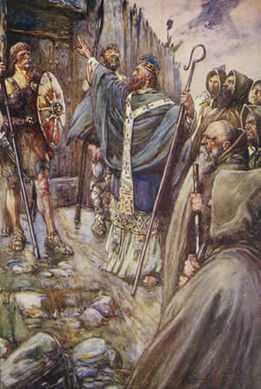563
| Millennium: | 1st millennium |
|---|---|
| Centuries: | 5th century – 6th century – 7th century |
| Decades: | 530s 540s 550s – 560s – 570s 580s 590s |
| Years: | 560 561 562 – 563 – 564 565 566 |
| 563 by topic | |
| Politics | |
| State leaders – Sovereign states | |
| Birth and death categories | |
| Births – Deaths | |
| Establishment and disestablishment categories | |
| Establishments – Disestablishments | |
| Gregorian calendar | 563 DLXIII |
| Ab urbe condita | 1316 |
| Armenian calendar | 12 ԹՎ ԺԲ |
| Assyrian calendar | 5313 |
| Bengali calendar | −30 |
| Berber calendar | 1513 |
| Buddhist calendar | 1107 |
| Burmese calendar | −75 |
| Byzantine calendar | 6071–6072 |
| Chinese calendar | 壬午年 (Water Horse) 3259 or 3199 — to — 癸未年 (Water Goat) 3260 or 3200 |
| Coptic calendar | 279–280 |
| Discordian calendar | 1729 |
| Ethiopian calendar | 555–556 |
| Hebrew calendar | 4323–4324 |
| Hindu calendars | |
| - Vikram Samvat | 619–620 |
| - Shaka Samvat | 485–486 |
| - Kali Yuga | 3664–3665 |
| Holocene calendar | 10563 |
| Iranian calendar | 59 BP – 58 BP |
| Islamic calendar | 61 BH – 60 BH |
| Julian calendar | 563 DLXIII |
| Korean calendar | 2896 |
| Minguo calendar | 1349 before ROC 民前1349年 |
| Seleucid era | 874/875 AG |
| Thai solar calendar | 1105–1106 |
| Wikimedia Commons has media related to 563. |
Year 563 (DLXIII) was a common year starting on Monday (link will display the full calendar) of the Julian calendar. The denomination 563 for this year has been used since the early medieval period, when the Anno Domini calendar era became the prevalent method in Europe for naming years.
Events
By place
Byzantine Empire
- Emperor Justinian I pardons Belisarius, he orders his release from prison, to restore him the properties and honours. He permits the general to live in obscurity and he gives him a "veteran" pension.
- The new Hagia Sophia (costs 20,000 pounds of gold[1]), with its numerous chapels and shrines, octagonal dome and mosaics, becomes the centre and most visible monument of Eastern Orthodoxy.
Europe
- The Tauredunum event,[2] mountain landslide into the Rhone river destroys a fort and two villages and creates a tsunami in Lake Geneva. The wave which reaches Lausanne is thirteen metres high, and eight metres high by the time it hits Geneva. Describing the event, Marius Aventicensis writes that the tsunami "devastated very old villages with their men and cattle, it even destroyed many sacred places", and swept away "the bridge in Geneva, windmills and men".[3]
By topic
Religion
- Columba, Irish missionary monk, travels to Scotland with twelve companions. He lands on the Kintyre Peninsula, near Southend, and begins his evangelising mission to the Picts. On the island of Iona, he founds a monastery (Iona Abbey) on the west coast in the Inner Hebrides.
Births
- Andreas of Caesarea, bishop and writer (d. 637)
- Chindasuinth, king of the Visigoths (d. 653)
Deaths
- Hou Andu, general of the Chen Dynasty (b. 520)
- Wang, empress of the Liang Dynasty
- January –Cutzinas, Berber chieftain
References
- ↑ P. Heather, The Fall of the Roman Empire: "A New History of Rome and the Barbarians", p. 283
- ↑ "Lake Geneva 'may face tsunami risk'". Daily Telegraph. 28 October 2012. Retrieved 28 October 2012.
- ↑ "Des chercheurs reconstituent le tsunami du lac Léman de l’an 563", Le Monde, 28 October 2012
